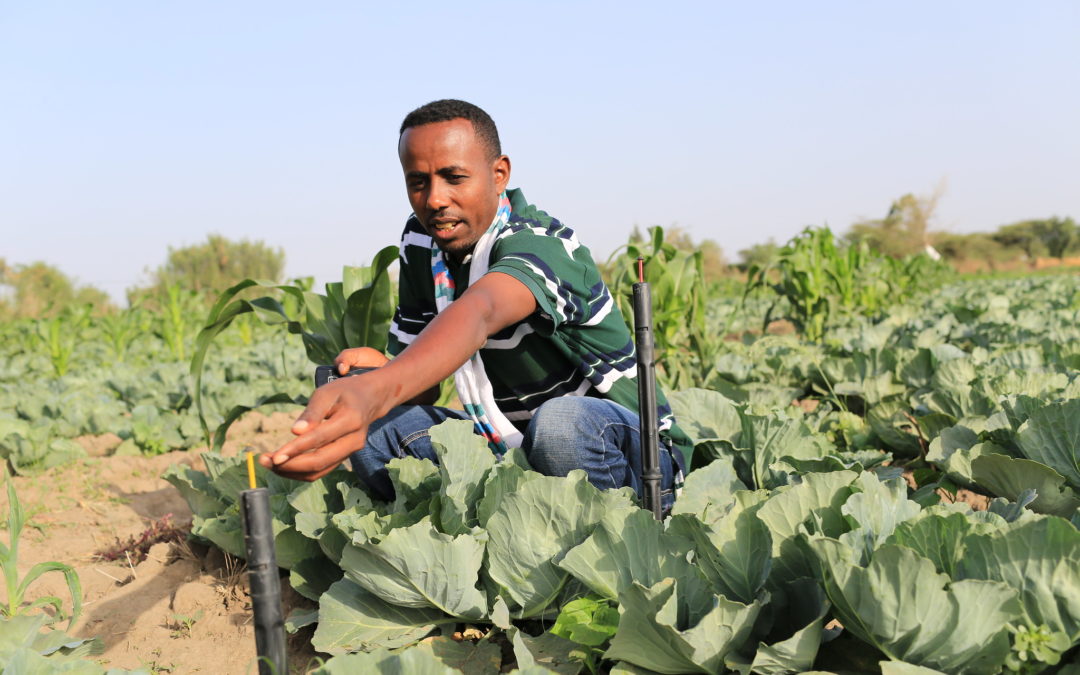Community-based video extension in Ethiopia
This blog is a submission to the Community of Practice on Data-Driven Agronomy’s blog competition on digital extension—an opportunity for those working in the digital extension in agriculture field to share their experiences with their technologies, business models, key challenges, and major bottlenecks, as well as how they solved such challenges, when creating and implementing innovative solutions.
iDE Ethiopia uses a community-based video system to provide agricultural extension services. The videos, each 10-12 minutes in length, are essentially produced by the community, feature community members, and are disseminated to the community.
Our process begins by training our field facilitators (FOs) on how to write a script, shoot, and edit a video. The FOs then select an appropriate actor (successful farmer) and shoot and edit the video by refereeing the approved storyboard. Once the video is produced and approved to be shown to the community by the subject matter specialist, our FOs and farm business advisers (FBAs) disseminate the videos to the community using a mobile battery-charged pico projector. The videos are projected for groups of 20-30 people at a farmer’s houses, and each group attends regular video screenings–usually twice or four times a month.
Each video focuses on a practice or awareness that a viewer can adopt and practice. For each video, adoption checklists of critical aspects of the practice are developed to support mediators involved in dissemination. The checklists reference core components and help evaluate whether the community members have adopted the practice correctly, incorrectly, partially, or adapted innovatively.
Once the videos are produced, disseminated, and adopted, it is important to capture and incorporate its usage data and feedback from the community into the model for iteratively informed and better content development. So far, the videos’ impacts have been very good; in one year and six months, we have produced and disseminated ten community videos on different topics for 1500–2000 farmers.
This system combines technology and social organization to improve the cost-effectiveness and broaden the community participation of existing agricultural extension systems.
The unique components of this approach include a participatory process for local video production, a human-mediated instruction model for video dissemination and training, a hardware and software technology platform for exchanging data in areas with limited internet and electrical grid connectivity, and an interactive model to progressively better address the needs and interests of the community with analytical tools and interactive phone-based feedback channels.
What are the biggest challenges you have faced? How did you overcome them?
Because the FOs are working on different activities of the project as their primary task, they sometimes forget how to manipulate the camera setting and use the editing software. To overcome this challenge the Video Production Coordinator from the country office is shooting and editing the videos by himself. The FBAs then disseminate the video by the help of the FOs.
An additional challenge was that the FBAs who were selected to disseminate the video and to follow up with farmers who showed interest in adopting the technologies during the screenings had to leave their villages in order to do the work. Some requested an incentive. This challenge holds us back from reaching more farmers. The best solution for this is to hire an expert who works on video production at the project level and to allocate incentives for FBAs within the budget. With these solutions in place, we can reach more farmers.
In your opinion, what is the main opportunity for digital extension services? What recommendations would you make in order to realize this opportunity?
Digital technology has become part of our lives, even reaching isolated, rural areas. Farmers now have access to a wealth of information via the internet and mobile phones. These opportunities give digital extension services more opportunities to enable farmers to increase their knowledge and skills.
The community-based video extension combines both visual and verbal communication methods, and it can be developed using fairly low-cost tools and a hand-held camera.The other opportunity is it allows more than one language to be recorded as a commentary on a single video. This will enable to reach more farmers compared to other digital extension systems.
***
Photo: Apollo Habtamu / IWMI. Kelil Melekeso, Development Agent and Focal Person for LIVES shows a wetting front detector near Meki, Ethiopia.
Click here to view the full list of articles competing in the digital extension services blog competition.
January 20, 2020
Ephrem Abebe
ICT/Mobile Technology Coordinator
iDE Ethiopia
Latest news






